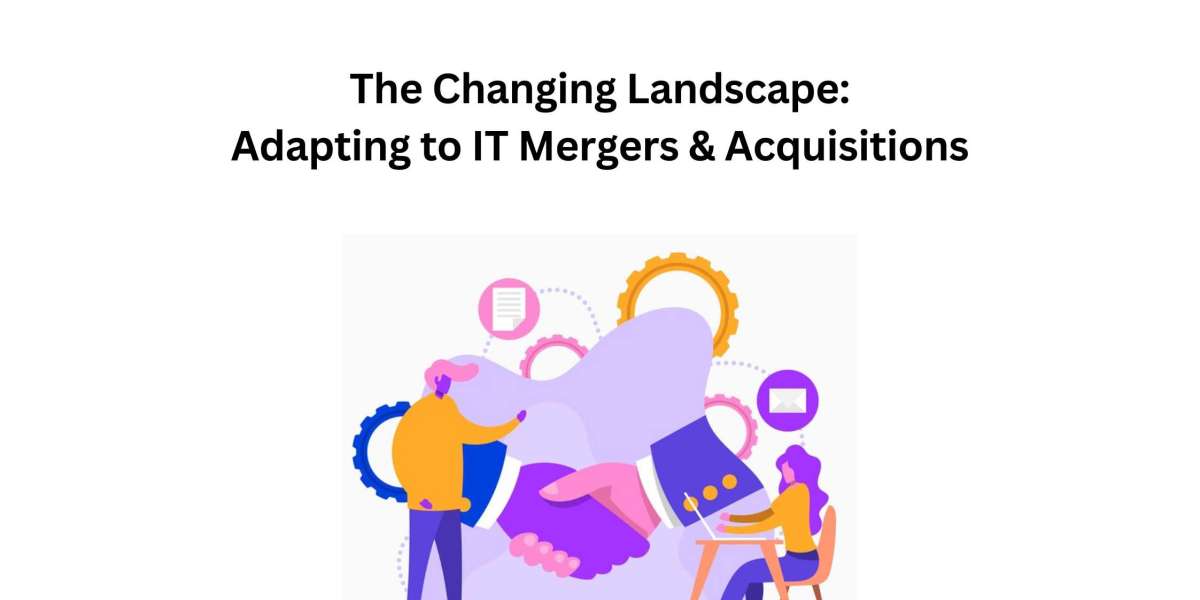Introduction: In today’s dynamic business environment, mergers and acquisitions (MA) have become common occurrences, particularly in the IT industry. As technology evolves and market demands shift, companies often seek strategic partnerships to enhance their capabilities, expand their market reach, or achieve synergies. However, navigating the landscape of IT mergers and acquisitions can be complex and challenging. This blog explores the changing IT MA landscape and highlights key considerations and strategies for successful adaptation in the face of these transformative deals.
Embracing Cultural Integration: One of the critical aspects of IT MA is the integration of different organizational cultures. It is essential to create an inclusive and collaborative environment where employees from both organizations can work together effectively. Open communication, cultural sensitivity, and a shared vision can help bridge the gap and foster a sense of unity among the merged teams.
Aligning IT Infrastructure: IT infrastructure integration is a significant challenge in MA. Consolidating systems, applications, and databases, while ensuring data integrity and minimizing disruptions, requires careful planning and execution. A comprehensive IT roadmap, with well-defined milestones and timelines, can facilitate the seamless integration of IT infrastructure and ensure business continuity.
Data Harmonization and Migration: Data plays a crucial role in any organization, and during an MA, harmonizing and migrating data becomes vital. This involves mapping and aligning data structures, ensuring data quality, and transferring data to a unified platform. Robust data governance practices, data cleansing, and data migration tools are essential for successful data harmonization and migration.
Talent Retention and Integration: Retaining and integrating key talent is crucial for the success of IT MA. Identifying critical roles and individuals, communicating openly about the future plans, and providing opportunities for growth and development can help alleviate employee concerns and ensure a smooth transition. Cultural fit, recognition of skills and expertise, and effective change management strategies play a significant role in talent retention and integration.
Vendor and Contract Management: MA can impact existing vendor relationships and contracts. Organizations must assess and renegotiate contracts, ensuring alignment with the post-merger objectives and cost optimization. It is crucial to manage vendor expectations, communicate changes effectively, and seek mutually beneficial solutions to maintain strong partnerships and leverage vendor expertise.
Cybersecurity and Risk Management: During IT MA, it is vital to assess and manage cybersecurity risks. This includes evaluating the cybersecurity posture of both organizations, identifying vulnerabilities, and implementing robust security measures. Conducting thorough due diligence, integrating security practices, and establishing a comprehensive risk management framework are essential to safeguard sensitive data and protect the merged entity from potential threats.
Communication and Change Management: Effective communication is key to managing change during IT MA. Transparent and timely communication with employees, customers, and other stakeholders helps alleviate uncertainties, build trust, and align expectations. Change management strategies, such as training programs, workshops, and regular updates, can empower employees to embrace the changes and adapt to the new organization’s goals and objectives.
Conclusion: The landscape of IT mergers and acquisitions continues to evolve as companies seek strategic partnerships to thrive in the rapidly changing technological landscape. Adapting to these transformative deals requires careful planning, cultural integration, infrastructure alignment, data harmonization, talent retention, vendor management, cybersecurity measures, and effective change management. By embracing these considerations and strategies, organizations can successfully navigate the changing IT MA landscape, leveraging the synergies of the combined entities and positioning themselves for sustained growth and success in the digital age.
#AvenDATA #legacysystems #ITlegacysystems #ITmergers #ITAcquisitions #mergersacquisitions #datamigration







